On this page, the two versions of this gyro/accelerometer IC have two different Logic Supply Voltages.
What is the VDD voltage?
Why would one version of the chip also have an option to make the voltage 1.8V?
http://invensense.com/mems/gyro/mpu6000.html

note: not intended to be a dupe of What is the difference between \$V_{CC}\$, \$V_{DD}\$, \$V_{EE}\$, \$V_{SS}\$.